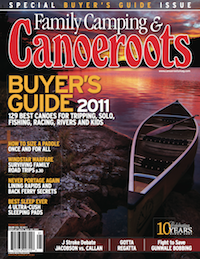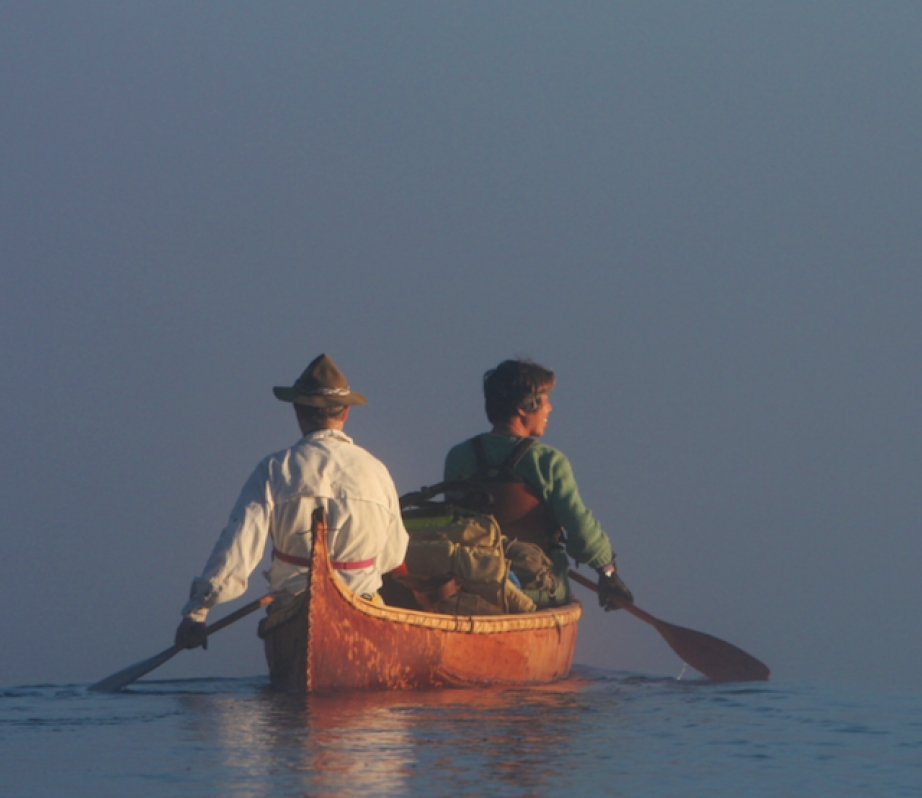Three of us headed west last summer for a trip on what is known as Saskatchewan’s voyageur highway—a loop starting at La Ronge and ending at Misinipe via the Deschambault, Sturgeon-Weir and Churchill rivers. Towed behind our car were the two newly built birchbark canoes we would paddle on this historic, 18-day journey.
We regarded the 6,800-kilometer roundtrip drive as a necessary evil, not really part of the core trip experience. It turns out that bark canoes tagging along behind your car is the equivalent of showing up at the office sporting a cast—everybody notices and has a story to share.
At six a.m. in a blink-and-you-miss-it pit stop, we drew such a curious crowd that we nearly ran over a couple of them just trying to get back onto the road. Where did we get the canoes, they wanted to know. Did we make them ourselves? Are we really using them for a trip? What happens if we crack them up on a rock?
At another stop, we returned to find a tattooed Harley rider leaning against the canoes. Out of his leather jacket he pulled a denim-bound photo album, eager to show us pictures of a trailer he’d built for his hog. It was in the shape of a canoe. As far as he was concerned, we were brothers.
By the halfway point of our drive, we had developed a system where one of us would pump the gas, another would head to the washroom and the third would act as public relations officer back at the trailer.
On Portage Street in downtown Winnipeg, we returned from shopping to find two Native men circling the canoes, soaking in every detail. For one of them, the boats were a throwback to something he’d heard about from his Anishinabe elders. The other man, a senior writer and researcher for the Aboriginal People’s Television Network, told us, “If you guys die on this expedition in these bark canoes, let me know because it might be newsworthy.” I said I would.
Our route to La Ronge included a drive north through remote eastern Saskatchewan, where we hoped to put the canoes in a tributary of the White Fox River and paddle up to the village of Love, thus empirically proving that you can actually make Love in a canoe. Sadly, the creek was no more than a damp, weed-choked gully. Canoes went back on the trailer and three smelly, road weary men made Love in the car instead.
Taking rooms that night at a motel in the nearby diamond-mining town of Nipawin, our disappointment was swept aside by a trucker we met in the bar.
“You say the word and let me join your expedition,” he implored us. “I’ll call the dispatcher right now and tell her where to find the truck. I’d give anything to paddle in a birchbark canoe.”

This article first appeared in the Spring 2011 issue of Canoeroots Magazine.



